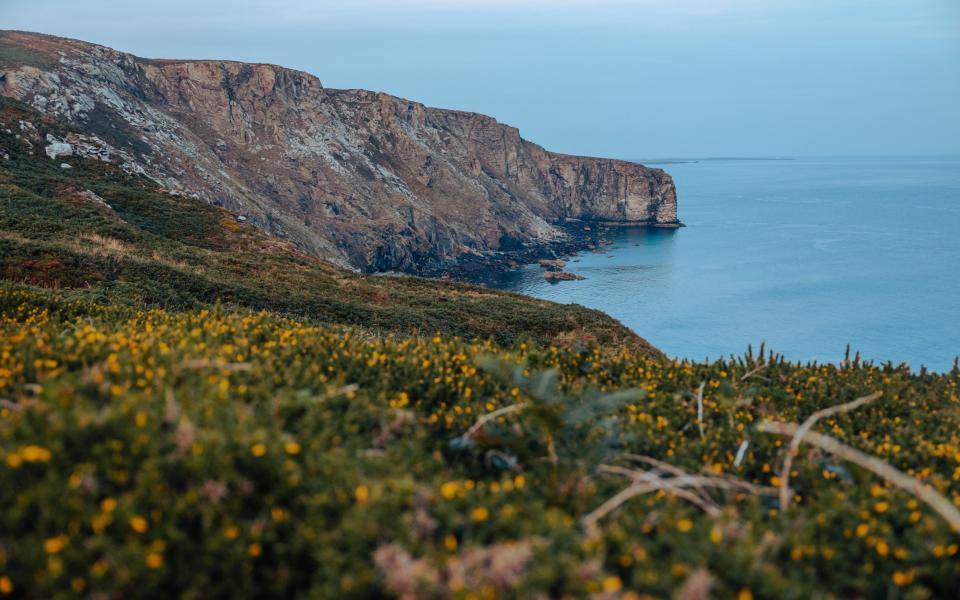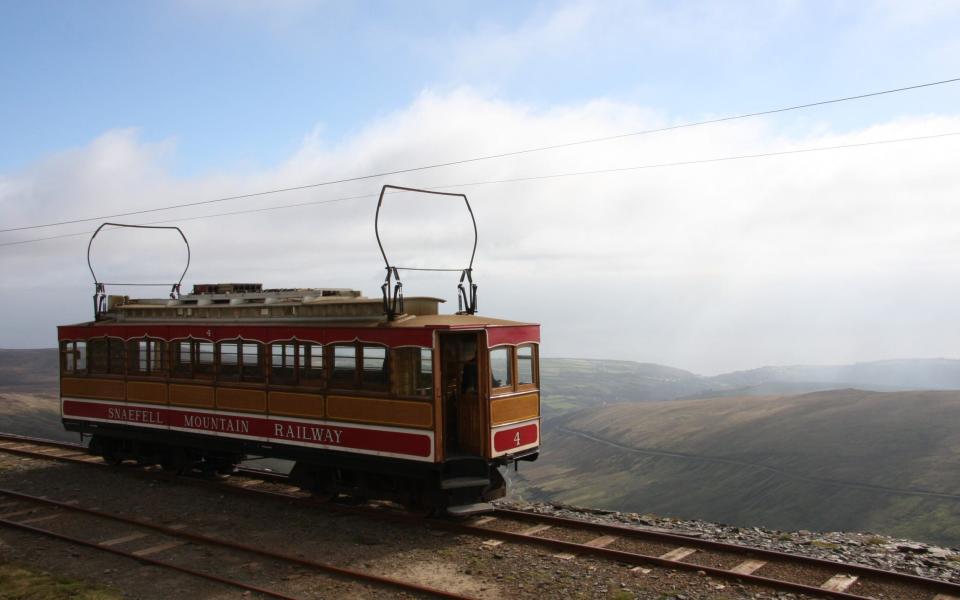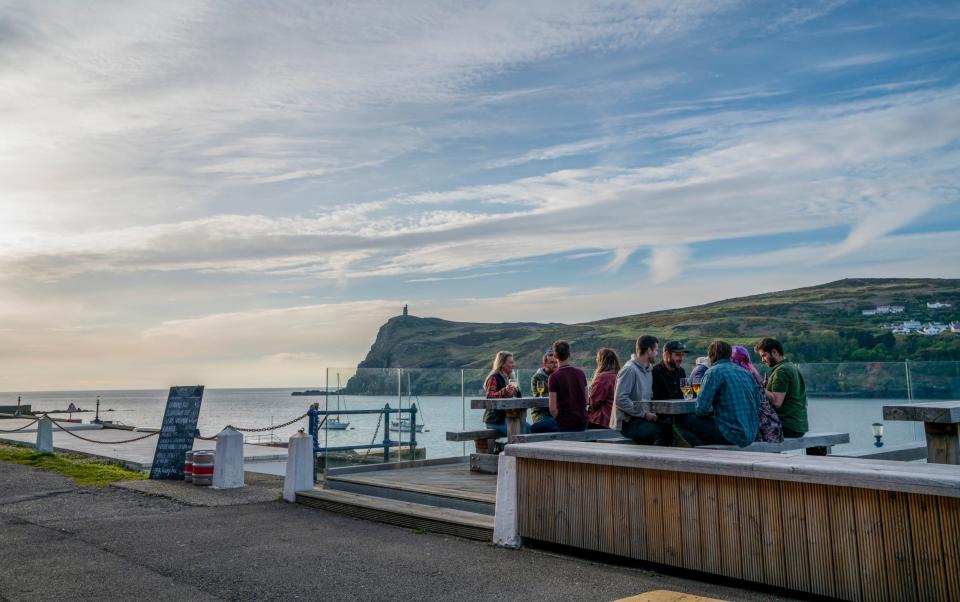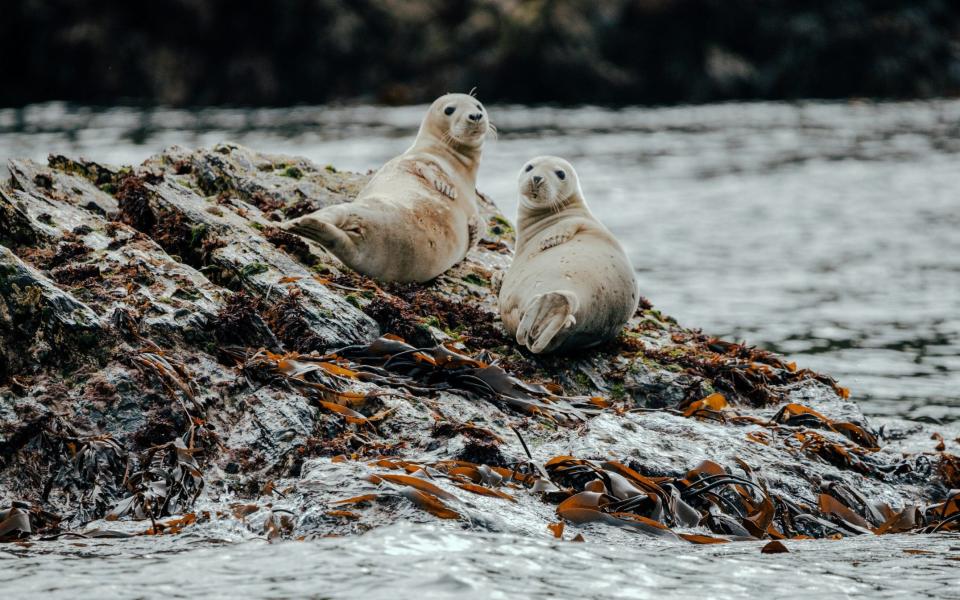The Isle of Man’s heritage railways put mainland British train journeys to shame.
It’s 10am and, right on schedule, my train pulls out of Port Erin station, announcing its departure with a joyful blast of the whistle. Clouds of smoke drifted over the window as we sped, adding to the magic of the scene outside: all meadows, hedgerows and patches of woodland bright with purple fox gloves. The landscape could scarcely have changed in the last century and a half since trains made their way through the Manx countryside.
Steam trains arrived on the Isle of Man in 1873, first running between Douglas and Peel and then, a year later, on the Port Erin line. By the 1920s and 1930s, around 100 trains a day served stations along four routes, carrying over a million passengers a year; but by 1968, only the Port Erin line survived.

It still relies on the original rolling stock I travel on today, with brightly painted engines pulling wooden paneled carriages whose red and orange cladding refers to the flames that power the engine.
Along with electric trains and horse-drawn trams, these heritage services are a big part of the Isle of Man’s attraction for visitors. Their sense of romance fits perfectly with the allure of a place that moves to a gentler rhythm than the UK (of which it is a Crown Dependency rather than a component).
With up to six round-trip departures, the steam trains lend themselves to sightseeing as well as point-to-point journeys. Half an hour after leaving Port Erin, I jump off at Castletown to have a nose around its medieval castle, then jump on the next train to continue to Douglas, the capital, with views of the sea at enhance the scenery along the way.


From the red-brick Douglas station, it’s a pleasant two-mile walk down the promenade to reach the terminus of the electric railway, passing seaside hotels built to welcome Victorian holidaymakers.
The vintage electric railway, opened in 1893, runs north towards Rathsay through the wooded valleys of the east coast. I stop half way at Laxey to connect with the mountain railway. Leaving the village, we take a good look at Lady Isabella, the world’s largest working waterwheel, before heading up through a moor grazed by herds of hardy sheep.
Approaching the summit, however, clouds descend across the scene. By the time we cross the Mountain Road (where motorbikes scream past at 200mph during the TT races, the signature Isle of Man event) is down to one metre. It’s a pity, the conductor tells me, because on a clear day you can see England, Scotland, Ireland and Wales at the same time.


“We call it the Cloak of Mannan,” he reveals, referring to stories about a sea god who created mists to protect the island from invaders. “It’s said that’s why the Romans never reached the island – but today it’s less welcoming when the fog closes the airport!”
I wake up the next morning to find that Manannan is engulfed in the island, but cloudy skies are no obstacle to exploring by bike. Although the original Douglas-Peel railway is no longer in operation, its route has been transformed into an 11-mile cycle path.
Thanks to the Victorian engineers who built this track along river valleys – the Dhoo, which flows towards Douglas Bay, and the Neb for the western portal – this cross-island route, free of elevation, makes for very easy riding. With a rented e-bike, I walk past wildflower-filled paths, through level crossings and station platforms that haven’t seen a train in over 50 years.


The fog lifts in the late afternoon, leaving the next day suitable for coastal walks. From Port Erin harbour, I take Raad ny Foillan: the 90 mile coastal path around the island. I follow it over cliff tops colored with bright green grasses and ferns interspersed with patches of heather that add purple to the palette. The high wind whips up the waves, disrupting efforts to find marine life. Seagulls, however, are enjoying the drafts and are my constant companions, joined now and then by jet-black ravens and their much rarer cousins, which swoop down on raging wings.
I reach the bottom of the island to find much more sheltered conditions, which bodes well for my lunchtime kayaking trip. At The Sound Café, I have a coffee with kayak guide Andy North, who points out that the mournful song of the seals wafts across from the island of Calf of Man. “I gave them a whistle, so we’ll play them a song and see if they sing back,” he says as we slip on life jackets and paddle into the channel.


What follows is magic. Attracted by Andy’s sweet music, the curious seals gather around, diving with a dramatic splash before emerging with a snort. Looking down through the clear-bottomed kayak, I can see one below, blowing silver bubbles through his nose and then trying to catch them in his teeth as, caught against the craft, they move around like liquid mercury. And all the while, seals still on the rocks seem to sing in response to Andy’s flute.
Our plan was to find secluded sea caves and secret beaches, but the seals are too strong. When they knock us off and back to their behavior, we slip on to the Calf of Man and go for a barefoot walk, enjoying the cool grass and sun-kissed pebbles. I think very much at the moment, which Andy thinks is no surprise. “Time spent in nature is good for the soul,” he says. “It really gets our batteries going.”
The interaction leaves me hungry for more animal encounters, so I book a wildlife-themed coastal cruise for my last day on the island. According to the leaflet, we could see anything from porpoises and puffins to sharks. But will our luck hold? Like much else on the Isle of Man, Manannan is likely to suffer from that.